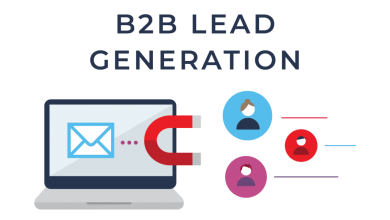7 Essential Technology Tools for Modern Fleet Management

Fleet management is a set of processes and tools used to plan and oversee your company’s commercial vehicles and drivers to meet your company’s goals and attain higher profits.
Today, effective fleet management requires the use of technology. These systems help gather and report vehicle and driver data, update routes, manage fuel and maintenance costs, and track vehicle maintenance status.
Here is an overview of essential technology tools for modern-day fleet management to improve efficiency, reduce costs, and improve customer satisfaction.
Table of Contents
Vehicle Tracking Technologies
Vehicle tracking technology involves installing equipment in your company’s vehicles. The tool records the vehicle’s location on a map grid and sends this data to a central database.
Vehicle tracking helps manage routes efficiently and schedule maintenance based on vehicle usage. It improves customer satisfaction by enabling companies to predict accurate arrival times and reduces insurance premiums by providing accurate accident reports.
Fleet managers use vehicle tracking systems to maintain their vehicles’ safety and efficiently manage road breakdowns. A tracker can also tell the fleet manager a specific truck’s location in the system. There are two vehicle tracking types: onboard and external tracking.
Transportation Management System (TMS)
A transportation management system (TMS) is a software application that automates distribution tasks. It manages moving products from the point of origin to the customer.
A transportation management system helps streamline, monitor, and manage transportation operations. It allows freight managers to find the best carrier at the best rate with the least hassle and confusion. The software also integrates the company’s transportation projects, work orders, vehicles, and drivers into one comprehensive system.
Companies use TMS, such as Oracle Transportation Management, to save on costs through increased delivery efficiency. It improves customer service as companies can manage shipment information more efficiently and accurately and speed up delivery times.

Smart Route Optimization Tool
Smart route optimization involves optimizing routes for optimal fuel efficiency and shorter delivery times. The tool uses the vehicle tracking system’s data to calculate the most effective path by considering fuel consumption, distance traveled, and time.
The technology automatically optimizes the path by recalculating the best course given variables such as weather conditions, traffic jams, driver’s breaks, and load time. It’s an excellent tool to reduce driver downtime from traffic and road construction delays.
Fleet managers schedule drivers and trucks to follow the most cost-effective routes. The schedule maximizes profit potential by reducing the total cost of delivering products to end consumers. It also improves customer service levels as deliveries get to their destinations on time.
Fuel Management System
A fuel management system (FMS) is software that helps the fleet manager calculate and monitor fuel usage. It scans the fuel economy of the vehicles used and provides real-time fuel cost data.
The technology uses GPS (vehicle tracking) data and vehicle behavior data from drivers’ logs. Fleet managers analyze this information to determine how much fuel each driver uses per mile and fine-tune driving behavior and vehicle maintenance to improve fuel efficiency.
Inventory Management Tool
Inventory management software allows a company to track the parts and material usage in its fleet and enables managers to ensure that ample spare parts inventory is on hand at all times. Without inventory management, a vehicle breakdown means ordering the part while the vehicle remains out of service.
The technology automates production planning and forecasting, inventory allocation, purchasing, invoicing, collection, payment, order processing, and shipping. These functions help companies increase operational efficiency while reducing costs in fleet management.
Inventory management systems improve demand forecast accuracy and reduce working capital requirements. It also leads to better maintenance planning and scheduling. Because companies don’t need to wait for ordered parts whale the vehicle is out of service, inventory management helps fleet managers optimize their fleet utilization by keeping all vehicles in operation aside from scheduled maintenance, which in turn helps to support on-time deliveries.
Augmented Reality
Augmented reality (AR) uses technology to augment a real-world view by displaying virtual information on top of the real world. This technology uses camera equipment and software to overlay computer-generated images on the user’s environment.
AR systems show fleet managers information about their fleet and drivers, such as where the vehicles are, the miles they have already traveled, and their next destination. It also enhances customer service by showing cars on maps and routes, providing the transparency that appeals to modern consumers.
AI Dash Cams
An artificial intelligence (AI) dash cam is a camera installed in a vehicle’s windshield. The camera monitors road conditions and alerts the driver to potential hazards in real time. It also warns of dangerous driving behavior by scanning speed, acceleration, braking, and lane changes over time.
The technology improves driver safety by preventing accidents and improving driver behavior. It helps reduce distractions and increase awareness of potential hazards.
Final Thoughts
Fleet managers can benefit from modern technology tools for real-time monitoring and tracking of vehicle data. The technology improves the company’s efficiency and customer service levels by reducing costs and ensuring on-time deliveries.
Follow TechWaver for more!


